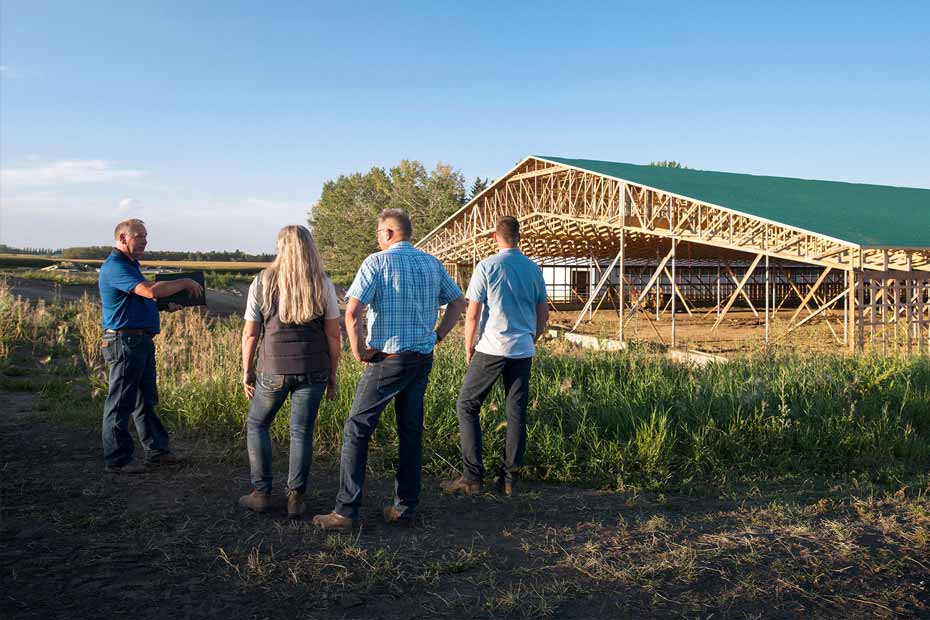Published January 20, 2022 • 4 Min Read
Farmers have been nagged and prodded about cost of production so much and for so long, people are starting to miss the point. Knowing your cost of production isn’t an end in itself. It’s the start of a journey to understanding and managing your farm better.
That’s the view of Mark Wobick and Aaron Honess, Farm Management Consultants with MNP in Lethbridge, Alta.
“Ten or 15 years ago, it was less common for people to calculate all or part of their cost of production,” says Honess. “Now, many more do. So the question is becoming, how can I use it to improve my bottom line?”
They offer one caution. A farmer might have a number for cost of production, but have all relevant costs been included? A figure that only includes field production costs – seed, fertilizer and chemical – would be incomplete. Costs for land, labor, buildings, power, fuel and equipment should also be accounted for. It can become a complex calculation.
“You can have a large repair bill for a tractor,” says Wobick. “The question is how you allocate it to your crops and perhaps livestock. That allocation can become a bit arbitrary, and there can be diminishing returns in figuring this out the further you go.”
Check your cost of production process and number with your accountant or farm management consultant. Once you have it, here are six ways you can use it to achieve better results:
1. Benchmarking and improvement
Once you have an accurate number for your operation, you have a benchmark to compare to others and improve over time. As one example, in 2019, MNP published a cost of production study for pork producers in Alberta. Other commodity groups and provincial ag departments often have their own.
2. Crop rotation
Given the land you’re farming, your cost of production for different crops could favor one crop or another in a given year, within the overall context of an agronomically well-balanced crop rotation.
3. Crop marketing
“Cost of production is extremely important as you look at your marketing decisions,” says Honess. “It’s not about how much money you can make, it’s about how much money you have to make. Do you have to shoot the lights out as far as yield to be profitable or does your cost of production help you in a below-average year?”
4. Business Risk management
With cost of production pointing to your break-even, you can evaluate how business risk management programs like crop insurance or other tools could be incorporated in your plan for the year.
5. Land acquisition
Knowing your cost of production contributes to understanding what you can afford to pay to buy or lease farmland, and how farming different types of land could influence your profitability.
6. Farm financing
A strong grip on your current production costs will be welcomed by a current or prospective lender or farm investor. It’s also valuable data for potential farmland buyers.
As Wobick and Honess see it, it’s time to move beyond just knowing cost of production.
“We try to emphasize with our farm clients that cost of production as a raw number is just the start,” says Wobick. “It is a tool that’s part of a broader, more holistic approach to farm management. It’s information you need to make a wide-ranging suite of decisions. It’s not about just knowing your cost of production, but what you do with that knowledge.”
Help take your agri-business to the next level. Check out the new University of Guelph Foundations in Agricultural Management course, created in collaboration with RBC & Farm Credit Canada. Invest in your Business. Invest in Yourself.
This article is intended as general information only and is not to be relied upon as constituting legal, financial or other professional advice. A professional advisor should be consulted regarding your specific situation. Information presented is believed to be factual and up-to-date but we do not guarantee its accuracy and it should not be regarded as a complete analysis of the subjects discussed. All expressions of opinion reflect the judgment of the authors as of the date of publication and are subject to change. No endorsement of any third parties or their advice, opinions, information, products or services is expressly given or implied by Royal Bank of Canada or any of its affiliates.
Share This Article






